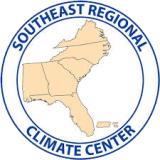Next month’s Southeast Monthly Climate Webinar is on Tuesday, May 11 at 10 a.m. Eastern, with a special presentation on "Overview of the U.S. Drought Monitor." Register here for upcoming webinars.
Climate Conditions and Outlooks
- March temperatures were near average, with a freeze during the first weekend in April.
- March precipitation was variable across the region with some areas very wet and above average (such as Alabama) and other areas very dry and below average (such as Florida).
- March had two severe weather outbreaks: 25 tornadoes in Alabama on March 17–18 and an EF-4 tornado in Georgia on March 25–26.
- A La Niña Advisory is still in effect, but is likely transitioning to neutral conditions during the spring (80% chance during May–July).
- Pollen season is still here. Visit the USA National Phenology Network to track the status of spring and pollen, and to see forecasts of pests and invasive species.
- Looking ahead: The next 6–10 days have a higher probability of cooler temperatures and drier conditions for most of the Southeast, and wetter conditions in Florida. The next three months will likely be warm, with Virginia and North Carolina likely to be wet.
Current U.S. Drought Monitor map for the Southeast with data valid for April 6, 2021. The U.S. Drought Monitor (USDM) is updated each Thursday to show the location and intensity of drought across the country. Drought categories show experts’ assessments of conditions related to dryness and drought including observations of how much water is available in streams, lakes, and soils compared to usual for the same time of year.
Short-term Moderate Drought (D1) is present in Florida, with Abnormally Dry (D0) conditions in Alabama, Georgia, and Virginia.
Current U.S. Drought Monitor map for Puerto Rico with data valid for April 6, 2021. The U.S. Drought Monitor (USDM) is updated each Thursday to show the location and intensity of drought across the country. Drought categories show experts’ assessments of conditions related to dryness and drought including observations of how much water is available in streams, lakes, and soils compared to usual for the same time of year.
Current U.S. Drought Monitor map for the U.S. Virgin Islands with data valid for April 6, 2021. The U.S. Drought Monitor (USDM) is updated each Thursday to show the location and intensity of drought across the country. Drought categories show experts’ assessments of conditions related to dryness and drought including observations of how much water is available in streams, lakes, and soils compared to usual for the same time of year.
U.S. Drought Monitor Categories
Current U.S. Drought Monitor map for the Southeast with data valid for April 6, 2021. The U.S. Drought Monitor (USDM) is updated each Thursday to show the location and intensity of drought across the country. Drought categories show experts’ assessments of conditions related to dryness and drought including observations of how much water is available in streams, lakes, and soils compared to usual for the same time of year.
Short-term Moderate Drought (D1) is present in Florida, with Abnormally Dry (D0) conditions in Alabama, Georgia, and Virginia.
Current U.S. Drought Monitor map for Puerto Rico with data valid for April 6, 2021. The U.S. Drought Monitor (USDM) is updated each Thursday to show the location and intensity of drought across the country. Drought categories show experts’ assessments of conditions related to dryness and drought including observations of how much water is available in streams, lakes, and soils compared to usual for the same time of year.
Current U.S. Drought Monitor map for the U.S. Virgin Islands with data valid for April 6, 2021. The U.S. Drought Monitor (USDM) is updated each Thursday to show the location and intensity of drought across the country. Drought categories show experts’ assessments of conditions related to dryness and drought including observations of how much water is available in streams, lakes, and soils compared to usual for the same time of year.
Drought Conditions
- Short-term Moderate Drought (D1) is present in Florida, Puerto Rico, and the U.S. Virgin Islands, with Abnormally Dry (D0) conditions in Alabama, Georgia, and Virginia.
- Looking ahead: Further drought development is not likely for the rest of the month due to sufficient precipitation. Flash drought likelihood is low in spite of drought in southern Florida, but should still be watched.
Water Resources and Spring Flood Outlook
- Streamflows remain above normal across many of the headwater reaches of the larger rivers of the Southeast, with near-normal conditions elsewhere.
- Looking ahead: Drier weather and warmer temperatures will decrease stream flows across the region into late spring. The Late Spring Flood Outlook calls for typical late springtime river flooding, which from April to June is fairly minimal.
Agriculture Impact and Outlook
- Variable rainfall conditions have hurt some farmers and helped others. A warm spell accelerated development but has slowed due to recent colder conditions.
- Early April frost caused damage to blueberries, peaches, vegetables, and other crops, but this was not as bad as it could have been.
- Looking ahead: Cool conditions in the next two weeks will slow crop growth, with a low chance of frost except in the mountains. Water use by actively-growing plants means evapotranspiration will increase use of soil moisture quickly, so dry spells will have greater effect. Keep an eye on conditions and report them via the Condition Monitoring Observer Reports (CMOR) or your local extension agent.
Tornado Climatology and Forecasting in the Southeast
- The Southeast region experiences strong tornadoes, and they are more likely to occur during the cool season.
- There are a disproportionate number of casualties from tornadoes in the Southeast compared to other regions, in particular for nighttime fatalities. This is due to a number of factors, including faster storm speeds, larger percentage of mobile home and weak-frame housing stock, percent of forests and other land cover types that reduce visibility of both spotters and the public, and a higher population density.
- There is a lack of a focused “tornado season” in the South, which can lead to complacency. There are other human vulnerabilities (education, coping styles, warning distribution systems, etc.) that tend to increase the fatality rates within this region.
- For more information on the tornado research presented, contact Victor Gensini (vgensini@niu.edu) or visit https://atlas.niu.edu/ and https://wcs.niu.edu/.
What Happened: Southeast Temperature
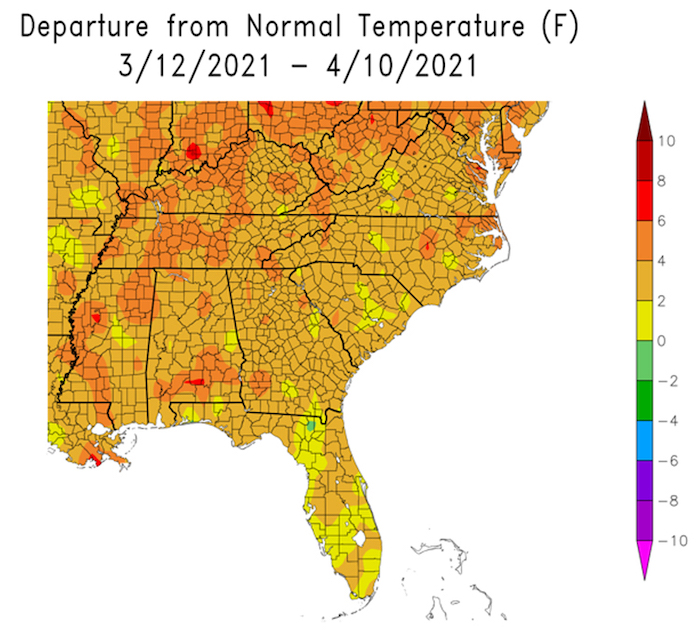
What Happened: Southeast Precipitation
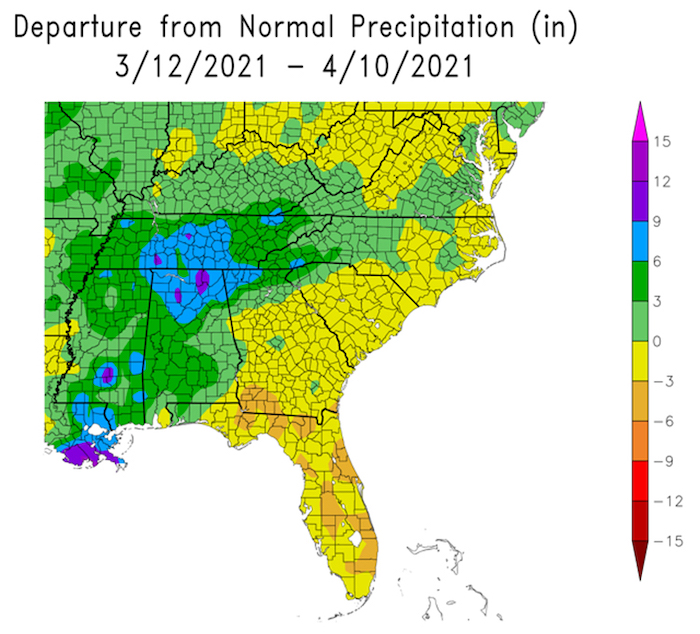
Current Conditions: River Flood Status
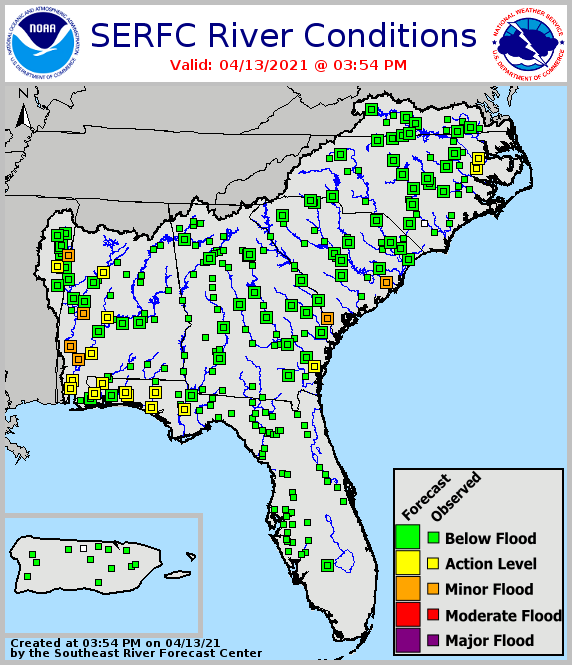
Looking Ahead: Streamflow Forecast
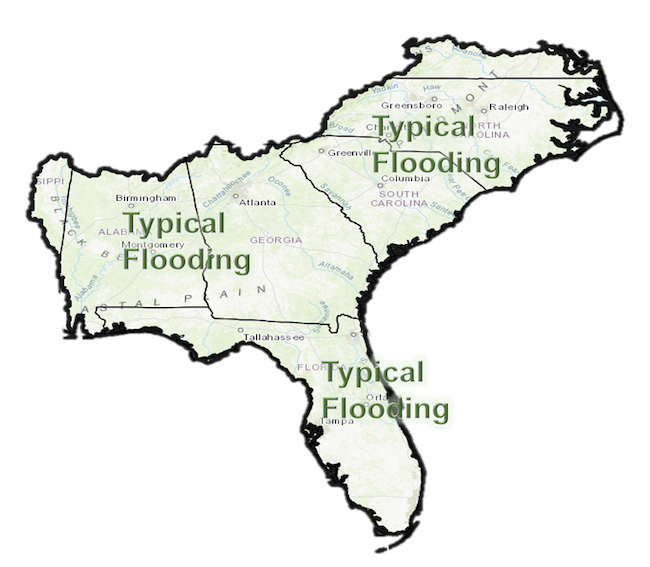
Looking Ahead: Seasonal Outlooks
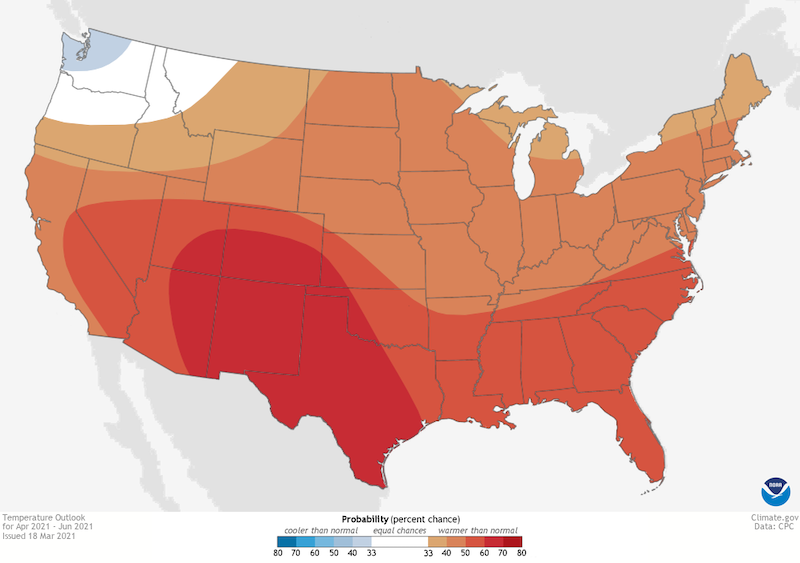
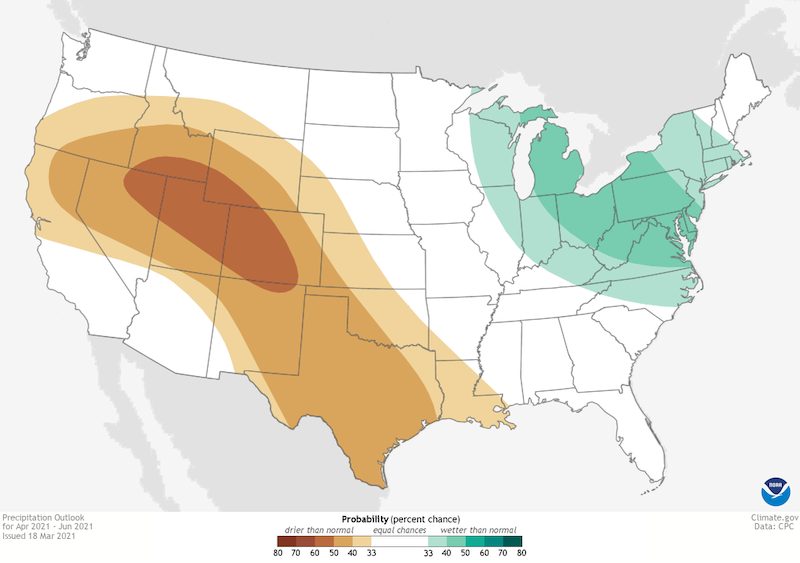
Spotlight on Tornadoes: Percent of Nighttime Fatalities
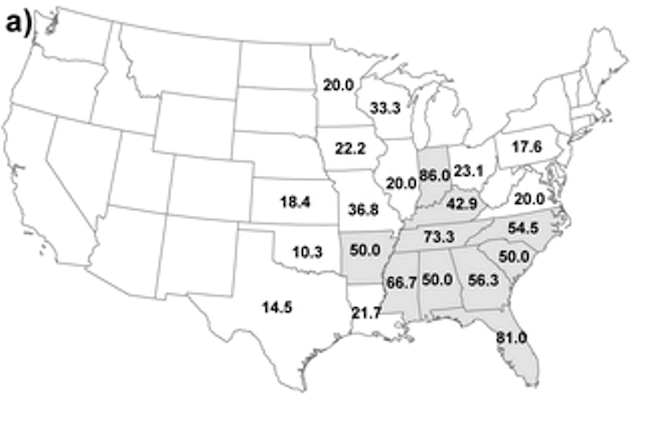
Acknowledgments
Webinar Speakers
- Sandra Rayne, Southeast Regional Climate Center
- Jeff Dobur, National Weather Service Southeast River Forecast Center
- Pam Knox, University of Georgia
- Victor Gensini, Northern Illinois University
Relevant Regional Resources
Southeast Regional Climate Center (SERCC) [website currently under construction]
National Weather Service Southeast River Forecast Center (SERFC)
Streamflow Monitoring & Forecasting
Climate and Agriculture in the Southeast: Blog
National Weather Service Climate Prediction Center: Outlook Products
ACIS Climate Maps, High Plains Regional Climate Center
The Southeast Climate monthly webinar series is held on the second Tuesday of each month at 10:00 a.m. ET. This series is hosted by the Southeast Regional Climate Center, in partnership with the National Integrated Drought Information System (NIDIS) and the NOAA National Weather Service. These webinars provide the region with timely information on current and developing climate conditions such as drought, floods and tropical storms, as well as climatic events like El Niño and La Niña. Speakers may also discuss the impacts of these conditions on topics such as agriculture production, water resources, wildfires and ecosystems.
For webinar-related questions or suggestions, please contact Meredith Muth (meredith.f.muth@noaa.gov).


